|
BULB LOG 46 --- 13th November 2006
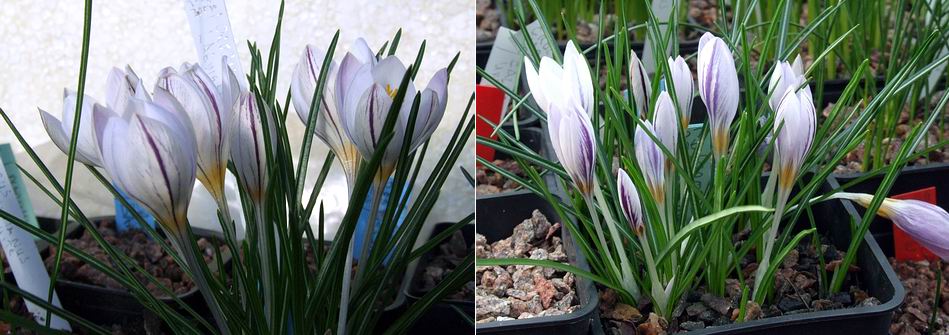
Crocus laevigatus
The pot on the left is a form of Crocus laevigatus that I got from Tony Goode and it brings a new range of this beautiful and variable autumn flowering crocus to our collection. The flowers are larger, have a paler ground and more of a goblet shape when they open, than our own seedling selections (above right) which are all several generations down the line from one introduction. I look forward to an even better range of seedlings in the future now we have introduced new genes into our range of this species.

Crocus longiflorus and kotschyanus going over
Part one of the Crocus year is nearly over now, I call it "part one" because these are early flowering crocus, not late flowering, as some people call them. Even as the last few flowers start to fade they still are still beautiful to see and enjoy as our daylight hours shorten dramatically as we head into winter. The flowers on Crocus longiflorus are still attractive to look at but in a few days time when they collapse and shrivel like those of C. kotschyanus on the right they will need to be removed to prevent them becoming attacked by mildew in the cold damp weather.

Crocus mathewii
The stunningly beautiful Crocus mathewii is now well passed flowering and I have already removed all the old flowers. It is important to leave the flowers long enough to allow the pollen to grow down the long tube from the stigma to the ovary where hopefully it has fertilised the embryo seeds. It is easy to see when the flower has served its purpose, the tube collapses and the flower withers then it is time to remove it. On the right is a pot of seedlings, the oldest of which were sown in September 2003 and I hope that they will start to flower next year. To save space I also sowed our 2004 seed harvest into this same pot by carefully tipping off the gravel and removing the top few centimetres of compost, there I sowed the seeds and covered them up again. It was only possible to do this as easily because I had sown the 2003 seed half way down the pot so I knew the tiny corms would not get disturbed by my prodding.
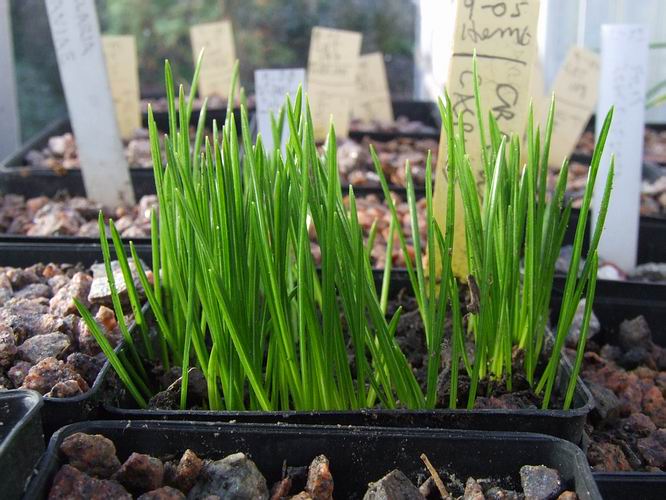
Crocus caspius one year olds
The big advantage of sowing Crocus seed deeply is that they mature much more quickly when they do not have to take themselves down to the correct depth in the compost and so they can grow quicker. These are the leaves of Crocus caspius which were sown and first germinated last autumn, these are their second year leaves. I showed you this potful pushing up the compost in log 43; see how they have grown in the few weeks since then, it is just possible that some may flower for the first time next autumn.

Narcissus albidus albidus
As the crocus flowers are in decline the Narcissus are just starting and we will soon have hundreds of flowers judging by the number of buds showing already. Narcissus albidus albidus is one that you think should be N. cantabricus because it is white, but the exerted stamens with scattered anthers and a protruding style mean that it is more allied to N. romieuxii and should be called N. romieuxii ssp albidus - it is all very confusing. It is interesting to note how the colour goes from a greeny yellow as the flowers first start to unfurl to a pure white when they are fully open.
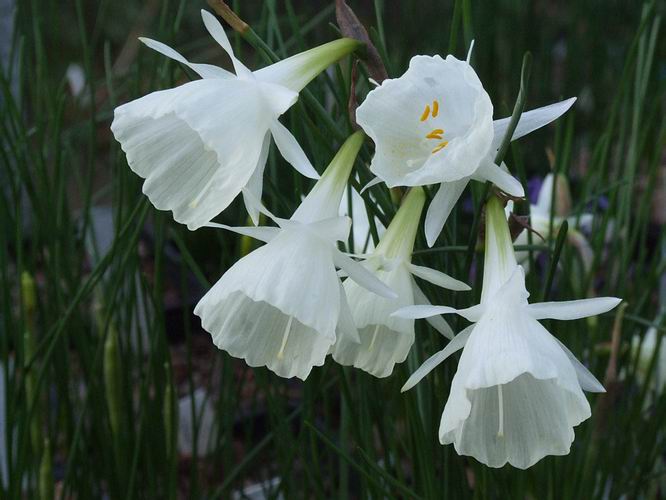
Narcissus cantabricus foliosus
Compare N.albidus to this group of Narcissus cantabricus foliosus: notice how the style does not stick out beyond the corona and also how far back the stamens are especially when compared to the previous species. I wish I could share the scent of these N. cantiabricus with you, it is beautiful and another factor I think should be more used in separating out the species. I find that all true N. romieuxii have very little if any scent at all while all forms of N. cantabricus are sweetly scented. I suppose because it is because people smell differently : I will rephrase that, people have differing abilities to detect scents, so using scent is not so definitive as other morphological features of the plants.

Narcissus 'Cedric Morris' buds
Well on its way to be in flower before December, Narcissus 'Cedric Morris' is already pushing buds up at a steady rate.
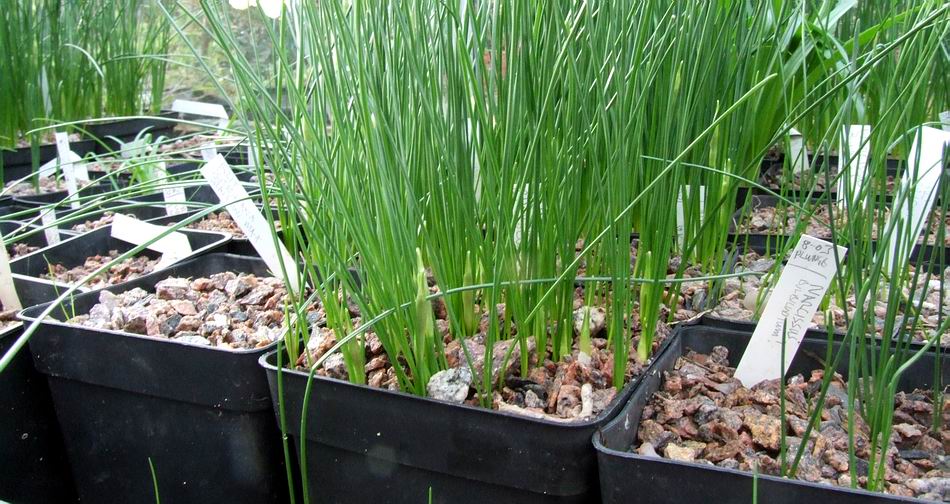
Narcissus 'Craigton Clanger' buds
One of the seedlings I raised from N. romieuxii, Narcissus 'Craigton Clanger', is also well budded up. I just named it this year and distributed my first spares to a few growers I hope it does as well for them as it does for us.
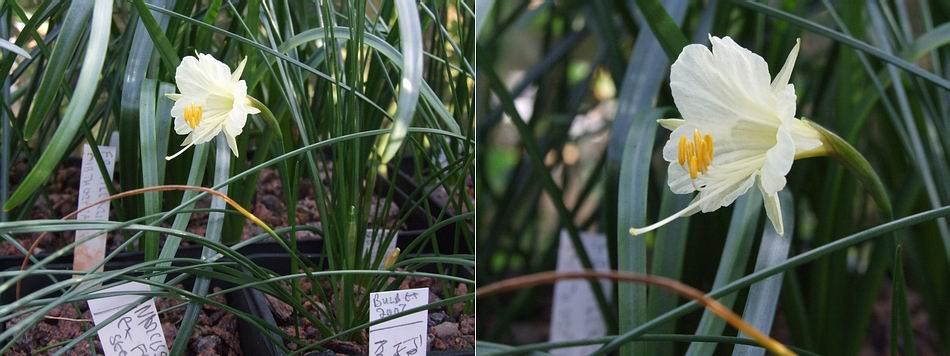
Narcissus hybrid
Another Narcissus hybrid that I wish would bulk up quicker for me is this short form with a scalloped corona. It was raised by the late Don Stead so I am not sure of its parentage but I am determined to do better by it.

Narcissus viridiflorus
Just managing to open as the temperatures finally start to drop towards winter is the ancient Narcissus viridiflorus. I say ancient because I am sure that this is a very primitive version of the narcissus with its very short corona and its petals both the same green colour as the leaves. Some times when it flowers it does not produce any leaves and the flower stem doubles up as stem and leaf to feed the bulb.
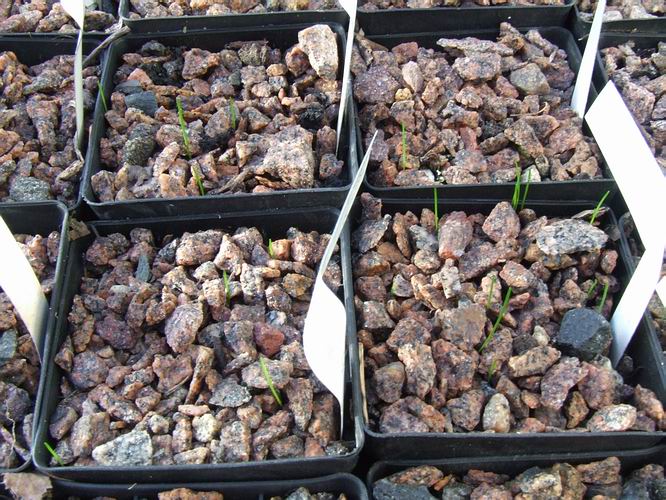
Seedlings
A few logs back I showed you a picture of some seedlings appearing in a pot of crocus. Well they have now appeared in some of the adjacent pots and I now think that is some seed that shed before I was able to collect it and the most likely culprit is a Narcissus.
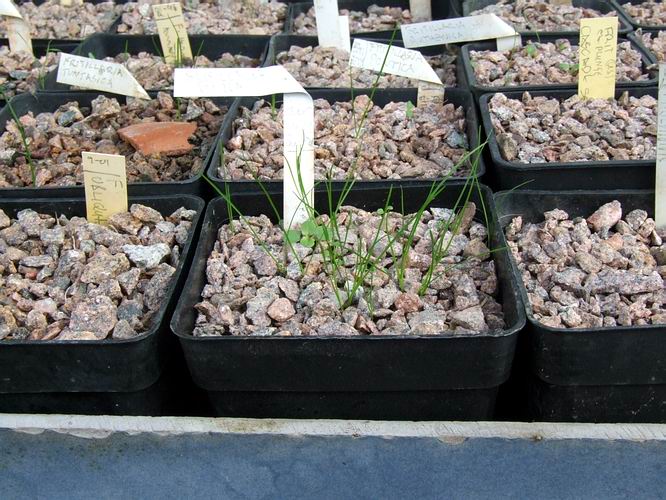
Weed seedlings in frit pot
In the frit house a different kind of seedlings are germinating - weeds. These are the result of some grass weeds that grew in the plunge last year and I did not notice them until it was too late. My excuse is that there are so many pots and fritillarias it is very difficult to spot all the weeds. Whatever I do not mind them being there as they are a good indicator that the compost is still moist enough for the frit bulbs which will be making roots even though they will not show above the gravel for two or three months. I will thin the weeds out a bit as there are rather too many in this pot.

Dactylorhiza increase
You may remember that I showed you how I remove the tubers from my Dactylorhizas, after their flowers have gone past, to speed up the rate of increase - if you do not remember check back to log 34. After I removed the tubers I replanted the old tuber complete with stem, see small inset picture, and now the stems have died back and gone brown but look at the new extra tubers that have formed - three in this case.
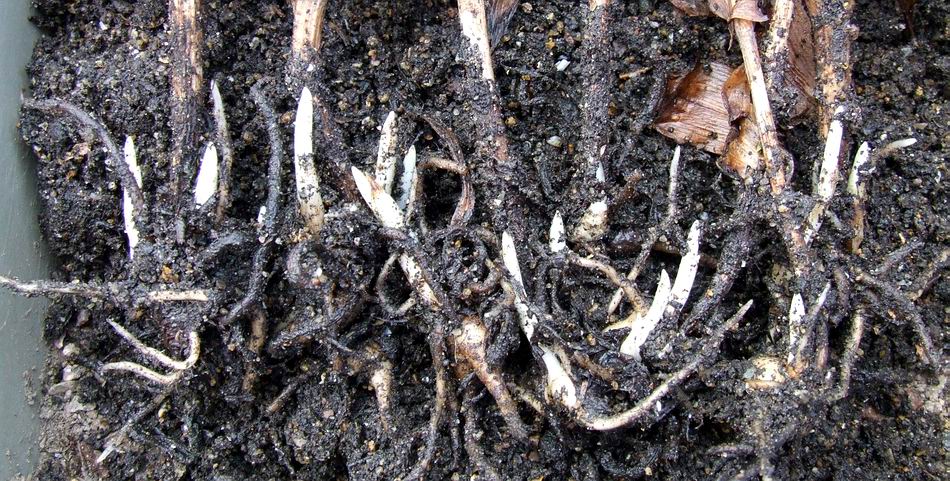
Dactylorhiza increase in numbers
All these are bonus tubers which would not have formed if I had not removed the first crop of tubers back in August.
^ back to the top ^
|

